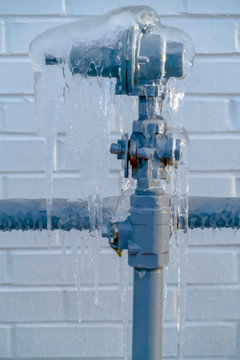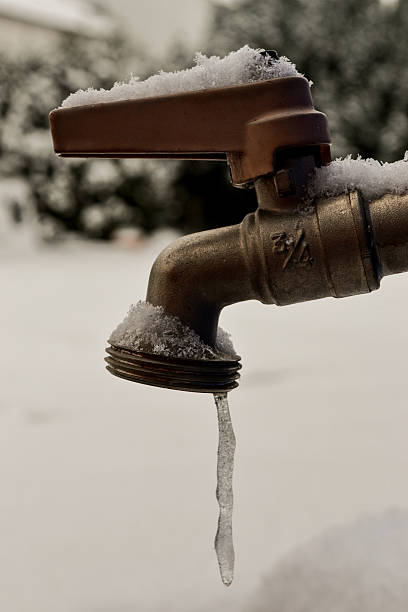Important Advice for Avoiding Frozen Plumbing in Cold Weather Conditions
Important Advice for Avoiding Frozen Plumbing in Cold Weather Conditions
Blog Article
We have stumbled upon this article relating to How to prepare your home plumbing for winter weather directly below on the web and thought it made perfect sense to quickly share it with you here.

Winter can damage your pipes, specifically by freezing pipelines. Below's just how to avoid it from occurring and what to do if it does.
Introduction
As temperatures decline, the threat of icy pipes rises, potentially resulting in costly fixings and water damages. Recognizing exactly how to prevent icy pipes is crucial for home owners in cold climates.
Prevention Tips
Shielding at risk pipelines
Cover pipelines in insulation sleeves or utilize warm tape to protect them from freezing temperatures. Concentrate on pipes in unheated or external areas of the home.
Home heating methods
Maintain indoor spaces appropriately warmed, specifically areas with pipes. Open up cupboard doors to allow warm air to distribute around pipes under sinks.
Just how to determine frozen pipelines
Seek reduced water circulation from faucets, uncommon smells or noises from pipelines, and noticeable frost on exposed pipes.
Long-Term Solutions
Structural adjustments
Think about rerouting pipes away from exterior walls or unheated locations. Include additional insulation to attics, basements, and crawl spaces.
Upgrading insulation
Buy premium insulation for pipes, attics, and wall surfaces. Appropriate insulation helps keep regular temperatures and decreases the threat of icy pipes.
Shielding Outside Plumbing
Yard hose pipes and exterior faucets
Disconnect and drain pipes garden pipes before wintertime. Install frost-proof faucets or cover outdoor taps with protected caps.
Understanding Icy Pipelines
What creates pipes to freeze?
Pipes ice up when subjected to temperatures listed below 32 ° F (0 ° C) for prolonged periods. As water inside the pipelines ices up, it expands, putting pressure on the pipeline wall surfaces and potentially causing them to burst.
Threats and damages
Frozen pipes can lead to supply of water disturbances, property damages, and pricey repair services. Burst pipelines can flood homes and trigger considerable architectural damage.
Indicators of Frozen Water Lines
Identifying icy pipelines early can prevent them from breaking.
What to Do If Your Pipelines Freeze
Immediate actions to take
If you suspect frozen pipelines, maintain taps available to soothe stress as the ice thaws. Make use of a hairdryer or towels taken in hot water to thaw pipes slowly.
Final thought
Avoiding frozen pipes needs aggressive measures and quick feedbacks. By recognizing the reasons, indicators, and safety nets, property owners can shield their plumbing during cold weather.
6 Proven Ways to Prevent Frozen Pipes and Protect Your Home
Disconnect and Drain Garden Hoses
Before winter arrives, start by disconnecting your garden hoses and draining any remaining water. Close the shut-off valves that supply outdoor hose bibs and leave the outdoor faucet open to allow any residual water to drain. For extra protection, consider using faucet covers throughout the colder months. It’s also important to drain water from any sprinkler supply lines following the manufacturer’s directions.
Insulate Exposed Pipes
Insulating your pipes is an effective way to prevent freezing. Pipe insulation is readily available at home improvement stores and is relatively inexpensive. Pay close attention to pipes in unheated areas such as the attic, basement, crawl spaces, or garage. Apply foam insulation generously to create a buffer against the cold. You can also wrap your pipes in heat tape or thermostat-controlled heat cables for added warmth.
Seal Air Leaks
Inspect your home for any cracks or openings that could let in cold air. Seal any holes around the piping in interior or exterior walls, as well as the sill plates where your home rests on its foundation. Additionally, make sure to keep your garage door closed unless you’re entering or exiting. Leaving it open creates a significant air leak that can lead to frozen pipes.
Allow Warm Air Circulation
During cold snaps, it’s essential to allow warm air to circulate evenly throughout your home. Leave interior doors ajar to promote better airflow. Open kitchen and bathroom cabinets to help distribute heat consistently around the rooms. If you have small children or pets, be sure to remove any household chemicals or potentially harmful cleaners from open cabinets for safety.
Let Faucets Drip
A small trickle of water can make a big difference in preventing ice formation inside your pipes. When temperatures drop significantly, start a drip of water from all faucets served by exposed pipes. This continuous flow helps prevent the water from freezing. Additionally, running a few faucets slightly can relieve pressure inside the pipes, reducing the chances of a rupture if the water inside does freeze.
https://choateshvac.com/6-proven-ways-to-prevent-frozen-pipes-and-protect-your-home/

Do you really like more info about Preventing and dealing with frozen pipes? Try to leave a remark down below. We will be happy to hear your ideas about this blog posting. In hopes that you come back again before long. Enjoyed our review? Please quickly share it. Let someone else find it. I thank you for reading our article about How To Avoid Freezing Pipes.
Click Here Report this page